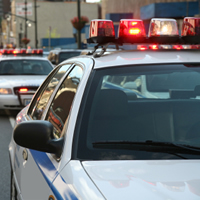It’s a sight most people are familiar with: a motorist on the side of the road, blowing into a breathalyzer to prove he or she is – or isn’t – intoxicated. Even if you haven’t seen a driver put through these paces in real life, you’ve definitely seen it on TV.
Now get ready for a new roadside reality: breathalyzers for tokers. If California takes the next logical step and legalizes marijuana in 2014, or 2016, it’s likely state lawmakers will devise a system for dealing with stoned driving.
 That could include a machine to determine THC levels in the breath (and, by extension, the bloodstream). In theory, it would work much like alcohol breathalyzers work now.
That could include a machine to determine THC levels in the breath (and, by extension, the bloodstream). In theory, it would work much like alcohol breathalyzers work now.
California, like other states, employs a two-pronged legal approach to drunk driving. A motorist who drives erratically and shows signs of intoxication can be charged with a DUI offense, while a motorist whose breath-alcohol content registers above .08 percent can be charged with a “per se” offense (because he or she was intoxicated per se).
The DUI approach may be easier to apply in marijuana cases but harder to prove, since “erratic” driving patterns and “intoxicated” behaviors are largely subjective. The per se approach, on the other hand, has the supposed certainty of science behind it but is actually highly questionable, especially where cannabis is concerned.
Gabriel Reeves, executive chef at the Elemental Wellness Center collective in San Jose, told NBC Bay Area the idea of a breathalyzer for weed hasn’t been thoroughly researched. The same principles that apply to alcohol don’t apply to weed, he said.
“It won’t be effective in determining inebriation with cannabis, because there are varying modes of consumption that . . . won’t show up on the type of breathalyzer test that they’re designing currently,” Reeves said.
If California adopts the breathalyzer idea, it wouldn’t be the first state to do so. In Washington and Colorado, both of whose voters legalized pot in last year’s election, it’s illegal to drive with more than five nanograms per milliliter of THC in your bloodstream.
Reeves said such limits are arbitrary, since marijuana affects different users differently.
“I don’t feel that that sort of a limit has been established as scientifically accurate or something that would be able to be standardized across the medical cannabis industry for each patient,” he said. “Because each patient, each patient’s needs, vary with the amount of milligrams of THC that they need to alleviate their symptoms.”
Earlier this year, a much worse idea – a bill that would have criminalized driving with any detectable amount of THC – died in the California Senate.
Alcohol is one of the biggest factors in road fatalities, but cannabis is barely a blip on the radar, statistically speaking. Not only has research shown that driving while high on pot is substantially safer than driving drunk (though still dangerous), recent studies show the availability of legal marijuana leads to less alcohol consumption, less drunk driving – and fewer road fatalities.
 California Marijuana Market Breaking "Marijuana News" from CA
California Marijuana Market Breaking "Marijuana News" from CA

